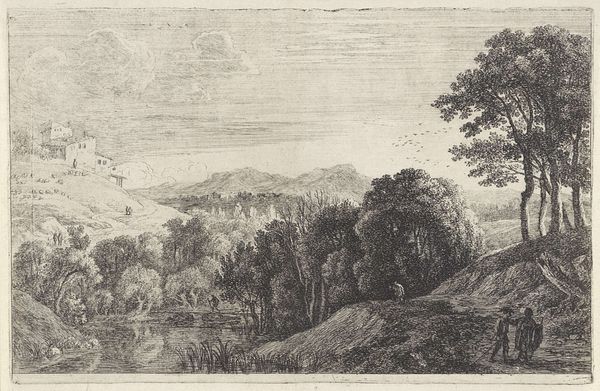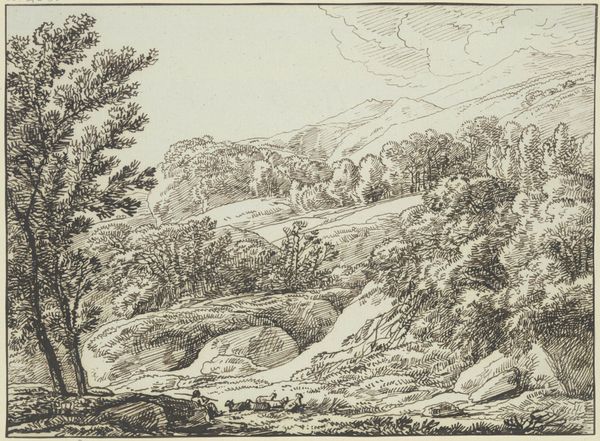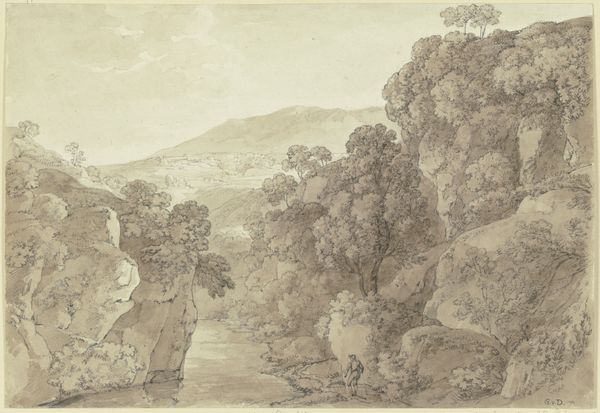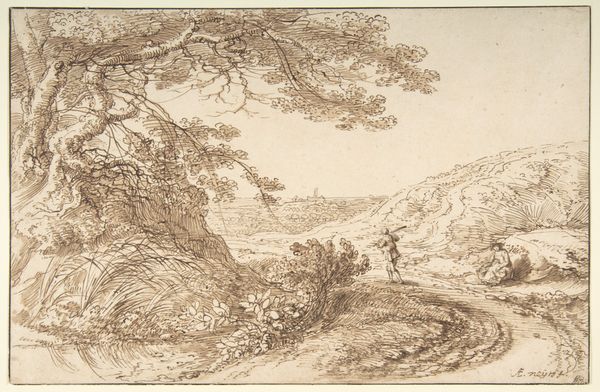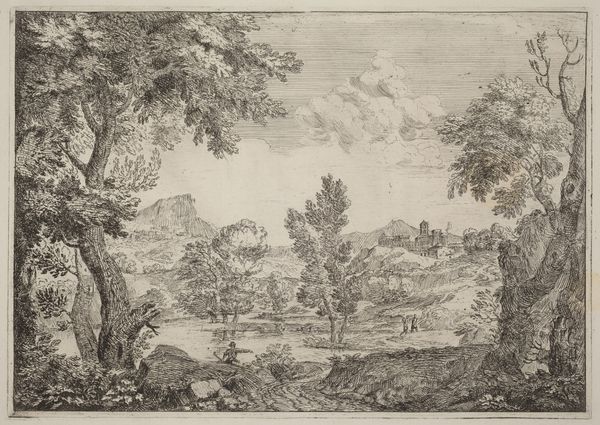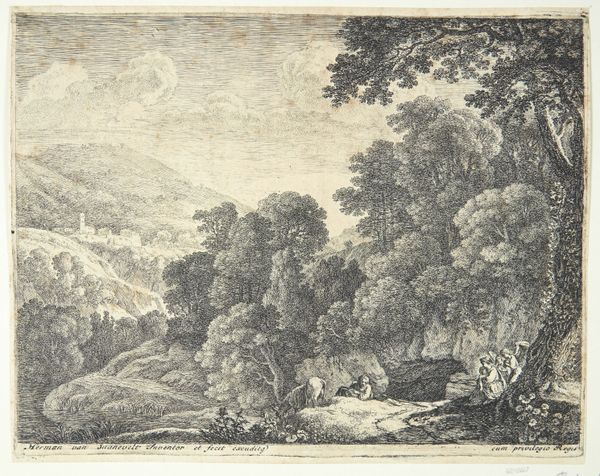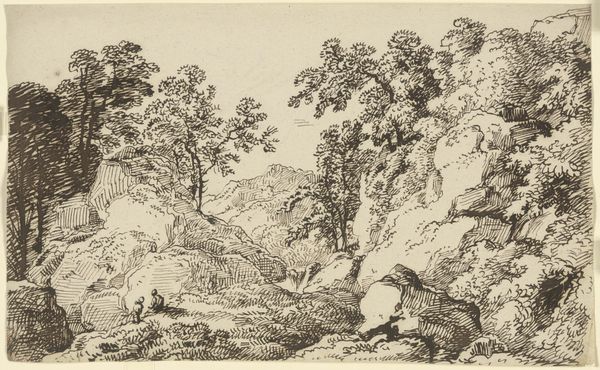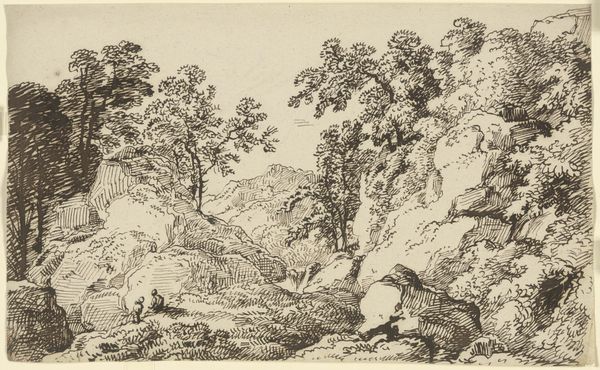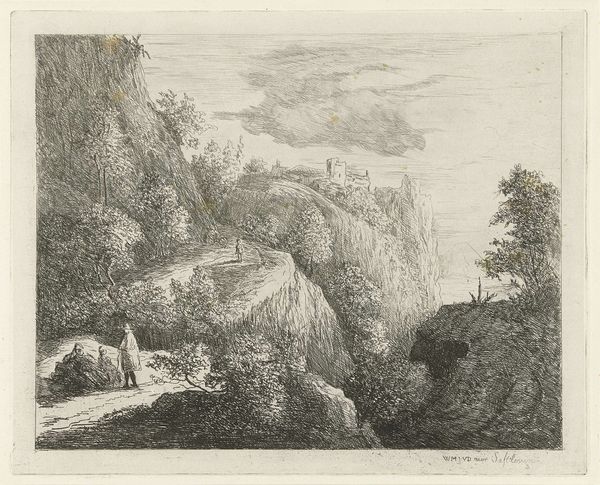
drawing, etching, pen
#
drawing
#
baroque
#
etching
#
landscape
#
etching
#
line
#
pen
Dimensions: height 166 mm, width 248 mm
Copyright: Rijks Museum: Open Domain
Editor: Here we have Isaac de Moucheron's "Landscape with Figures on a Country Road," dating roughly from 1677 to 1744. It’s rendered with pen, etching, and drawing. The scene is really peaceful at first glance but…something feels off, almost staged. What strikes you when you look at this drawing? Curator: The "staging" you notice speaks to the broader cultural function of landscape imagery during this period. Moucheron, influenced by the Baroque style, wasn’t simply depicting reality; he was constructing an ideal. The art world's patrons heavily influenced the perception and representation of landscape. These idealized depictions were very fashionable with aristocrats to give the impression of harmony with nature. Editor: So, it's less about the actual countryside and more about an idea? Were these commissioned frequently? Curator: Exactly. Think of it as visual propaganda of a sort. Landscape art often served as a projection of power and control. The wealthy often commissioned pieces celebrating estates they’d never bothered to set foot in, because showing ownership was of more importance than its purpose. Notice, for instance, the carefully placed figures within the composition and consider, were those strategically put into view to show how grand and cultivated these aristocrat owned plots were. How do you think art galleries influenced this, then? Editor: They would be catering to a very niche section of society with those sort of pieces. Curator: Precisely! And by displaying these images, museums and galleries solidified those perceptions, legitimizing both the aesthetic and the social order it represented. What did you make of this, then? Editor: That’s given me a whole new perspective. It’s not just a pretty picture, it’s a reflection of societal structures. Curator: Indeed. And that critical awareness is key to understanding the power and politics inherent in visual representation, isn’t it?
Comments
No comments
Be the first to comment and join the conversation on the ultimate creative platform.

